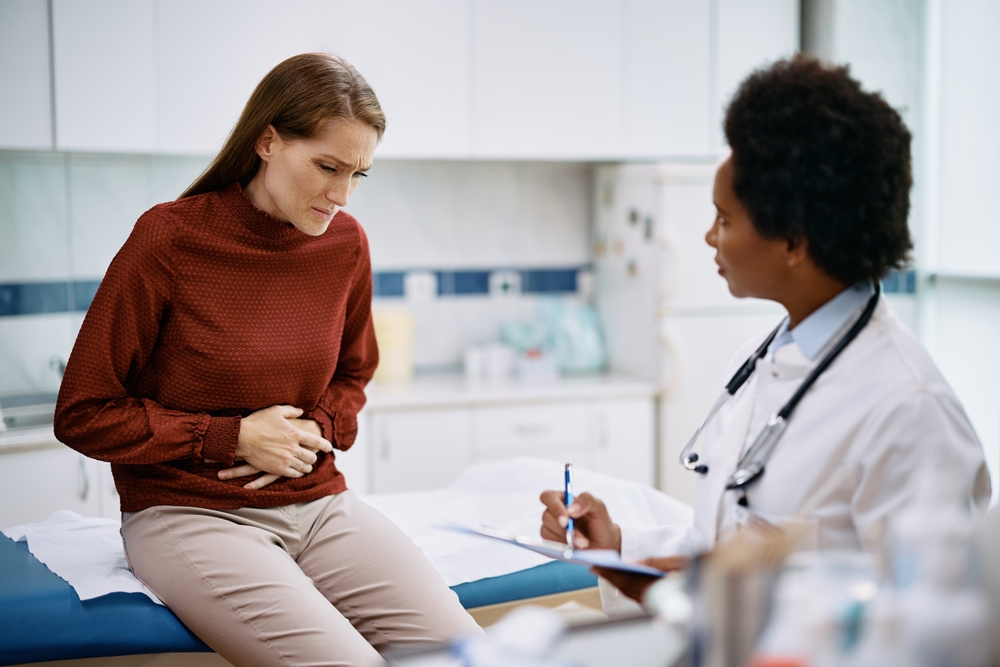A new tool, called the Raising Awareness Tool for Endometriosis (RATE), has been developed to help prompt early conversations between health providers and women about endometriosis-related symptoms, in efforts to improve early detection.
Endometriosis is a chronic medical condition which, according to the Australian Government Institute of Health and Welfare’s most recent report affects around one in seven women who are diagnosed by the age of 44–49 years. Despite its high prevalence, endometriosis is frequently under recognised.
Endometriosis represents a significant burden for those affected, their partners, and families, as well as a significant cost to society in terms of economic and social involvement. The economic burden alone is estimated to cost $6.5 billion dollars annually measured in absenteeism, loss of social and economic participation and use of the health system. More needs to be done to support both women and primary health at a general level, noting that the Australian Government’s funding allocation for 20 national specialised clinics is a positive step.
The pathway that leads to its eventual diagnosis is reported as challenging from the perspective of the women, girls and people living with this condition and primary health care providers who are often general practitioners. This may be due to the myriad symptoms associated with this condition. Typically, these include dysmenorrhoea, pelvic pain, heavy menstrual bleeding, and in up to 30%, infertility, with symptoms such as dyspareunia, abdominal bloating, pain or bleeding on defaecation, chronic fatigue, irritable bowel symptoms and urinary symptoms being associated less often (here).

This can be further complicated for women and their doctors in that the nature and severity of endometriosis-associated symptoms can (anecdotally) fluctuate and vary over time, from menarche to menopause and sometimes beyond (here). Those who present with atypical symptoms, further face the frustration of not feeling heard or having their symptoms dismissed, resulting in delays before a diagnosis is made (here).
The speed of diagnosis is determined by the concerns raised by the patient and the level of suspicion the doctor has regarding the relationship of symptoms to endometriosis. Because of its chronicity and the difficulties associated with being diagnosed and managed, some experience significant mental health impacts with depressive symptomatology largely determined by the experience of chronic pain.
Efforts to reduce diagnostic delay, the time between symptoms first appearing and diagnosis, have been ongoing. An Australian survey in 2017 reported an average time of eight years, with this appearing to be reducing in subsequent years. Further to this, in July 2018, the Australian Government launched the National Action Plan for Endometriosis, an initiative to improve the quality of life for those affected. One of its specific aims was to increase awareness and education by improving health literacy in the community and addressing gaps in education of the health sector.
To advance these efforts, the Raising Awareness Tool for Endometriosis (RATE) was developed by the Endometriosis Online Learning Research Subcommittee, a nationally selected multidisciplinary group led by the Royal Australian and New Zealand College of Obstetricians and Gynaecologists (RANZCOG), who also developed a free online learning module for primary health providers. RATE was designed to provide information to consumers and enable discussions between health providers and women on endometriosis-associated symptoms that they may be experiencing.
General practice-based research in this field is lacking. Our pilot study, using a mix of quantitative and qualitative data, explored the acceptability of using RATE in the general practice setting, and whether it helped in identifying endometriosis-related symptoms and initiated discussions on this as a possible diagnosis. Women were recruited to fill in the RATE regardless of reasons for general practice attendance. As consistent with previous published works in the field (here and here), menstrual and related symptoms are common.
For GPs who took part in our study, using a tool such as RATE helped give them a framework or approach, especially for GPs who had less experience in managing associated menstrual presentations. Overall, during follow-up, the GPs we interviewed felt that it was an easy to use and acceptable tool that helped to open a dialogue.
A limitation of this study is that long term follow-up and outcomes of investigations were not recorded and should be considered for further research. Another limitation was that women’s individual circumstances and management varied, with half the sample experiencing the most severe pelvic pain already diagnosed with endometriosis, adenomyosis or polycystic ovary syndrome, and others were receiving some form of hormonal therapy.
One challenge for GPs taking part in this study was around recognising symptoms associated with chronic pain, with one in five women identifying severe pain, and three-quarters of this group having associated chronic pain conditions.
Overall, more education strategies are needed to increase the identification of symptoms for those at risk of developing chronic pain syndromes because early referral for multidisciplinary management is key to improving outcomes for this group. More resources developed collaboratively with GPs are also needed to support clinical practice, which both increase the health literacy of patients and identify patients who require further care.
General practice remains the cornerstone of patient care, with 85% of Australians visiting a GP every year. However, consultations are increasing in time and complexity, with the burden of this largely falling to female GPs.
We encourage women and GPs to use this new tool to start a dialogue around endometriosis-related symptoms.
You can access the tool for free online.
Dr Jacqueline Frayne is a Perth GP and academic GP with the University of Western Australia.
Associate Professor Magdalena Simonis OAM is a Melbourne GP and a primary care researcher with the University of Melbourne.
Associate Professor Alan Lam is a Sydney gynaecologist, with expertise in treating complex female health conditions.
The statements or opinions expressed in this article reflect the views of the authors and do not necessarily represent the official policy of the AMA, the MJA or InSight+ unless so stated.
Subscribe to the free InSight+ weekly newsletter here. It is available to all readers, not just registered medical practitioners.
If you would like to submit an article for consideration, send a Word version to mjainsight-editor@ampco.com.au.

 more_vert
more_vert